The Tampa Bay Buccaneers are a professional American football team based in Tampa, Florida. The Buccaneers compete in the National Football League as a member club of the league's National Football Conference South division. The club joined the NFL in as an expansion team, along with the Seattle Seahawks, and played its first season in the American Football Conference West division. Prior to the season, Tampa Bay switched conferences and divisions with Seattle, becoming a member of the NFC Central division. As a result of the league's realignment prior to the season, the Buccaneers joined three former NFC West teams to form the NFC South. The club is owned by the Glazer family and plays its home games at Raymond James Stadium in Tampa.
The Buccaneers have won two Super Bowl championships and, along with the Baltimore Ravens, are the only two NFL franchises who are undefeated in multiple Super Bowl appearances. They were regarded as a perennial losing franchise for most of their first two decades due to suffering 26 consecutive losses in their first two seasons and 14 consecutive losing seasons from 1983 to 1996. Despite these early struggles, Tampa Bay is the first post-merger expansion team to clinch a division title, win a playoff game, and host a conference championship; feats they accomplished by their fourth season in 1979. The team's image improved by the time of their first championship in 2002, also the first for a franchise built after the merger, but they would not win another playoff game until their second Super Bowl championship season in 2020. Concurrent to the lack of success outside of their Super Bowl wins, the Buccaneers hold the NFL's lowest winning percentage at.404.
Franchise history
Hugh Culverhouse era
John McKay years
The Buccaneers joined the NFL as members of the AFC West in 1976. The following year, they were moved to the NFC Central, while the other 1976 expansion team, the Seattle Seahawks, switched conferences with Tampa Bay and joined the AFC West. This realignment was dictated by the league as part of the 1976 expansion plan, so that both teams could play each other twice and every other NFL franchise once during their first two seasons. Instead of a traditional schedule of playing each division opponent twice, the Buccaneers played every conference team once, plus the Seahawks.
Tampa Bay did not win their first game until the 13th week of their second season, starting with a record of 0–26. Until the Detroit Lions in 2008, the 1976 Bucs were the only Super Bowl-era team to go winless in a whole season. Their losing streak caused them to become the butt of late-night television comedians' jokes. Their first win came in December 1977, on the road against the New Orleans Saints. The Saints' head coach, Hank Stram, was fired after losing to the Buccaneers. Tampa Bay needed one more week to get their second victory, a home win over the St. Louis Cardinals in the 1977 season finale. The Cardinals also fired their coach, Don Coryell, shortly afterward.
The Bucs' situation improved rapidly in the 1979 season. With the maturation of quarterback Doug Williams and future four-time Pro Bowl tight end Jimmie Giles, the first 1,000-yard rushing season from running back Ricky Bell, and a smothering, league-leading defense led by future NFL Hall of Famer Lee Roy Selmon, the Bucs kicked off the season with five consecutive victories, a performance that landed them on the cover of Sports Illustrated.
With four games left in the season, the Bucs needed to win only one of them to make the playoffs. In the first, STP was put all over the goal posts in Tampa to prevent the goalposts from being ripped down in the event of a celebration. Four blocked kicks later, the Bucs wasted the oily substance, falling to the Minnesota Vikings 23–22. STP was wasted again the following week as the Bucs were shut out 14–0 by the Chicago Bears; and in O. J. Simpson's final home game in San Francisco, Tampa Bay lost its third straight attempt to clinch a division title against a 49ers team which came in with a 1–13 record. However, in the season finale at home against the Kansas City Chiefs, which was played in the worst downpour in Bucs history, Tampa Bay pulled out a 3–0 victory. Finishing with a 10–6 record, the Bucs had their first winning season in franchise history, and won the Central Division in a tiebreaker over the Bears. In an upset, the Bucs defeated the Philadelphia Eagles 24–17 in the divisional round of the playoffs. Because the Los Angeles Rams defeated the Dallas Cowboys in the other NFC playoff game, the Bucs hosted the NFC Championship Game the following week in Tampa. The Bucs lost to the Rams 9–0. In their fourth season, the Bucs seemed on the verge of fulfilling McKay's five-year plan.
The Bucs made the playoffs again by winning their division in the 1981 season. It came down to a thrilling final game at Detroit; the winner would take the Central Division crown and the loser would miss the playoffs. The Detroit Lions had not lost at home all season. Although the Bucs trailed early, an 84-yard touchdown bomb from QB Williams to WR Kevin House and a fumble recovery for a touchdown by DT David Logan sealed the win for the Bucs. In the playoffs, the Cowboys defeated the Bucs, 38–0, in the divisional round.
The 1982 season started 0–3 for the Bucs, before a player's strike shut down the NFL for seven weeks. When the league resumed play, the Bucs were nicknamed the "Cardiac Kids" for winning five of their next six games, all in the final moments, to go 5–4 and qualify for the expanded playoff slate. In the first round, the Bucs once again faced the Cowboys at Dallas, losing 30–17. As it turned out, this would be the last winning regular season under Culverhouse's ownership.
Before the 1983 season, Williams bolted to the United States Football League in a salary dispute. The Bucs lost their first nine games of the 1983 season en route to finishing 2–14, the first of 12 consecutive seasons with at least ten losses—an NFL record. Included was the drafting of Heisman Trophy winner Bo Jackson with the first pick in the 1986 draft. Jackson had let it be known that he would never play a down for Hugh Culverhouse at Tampa Bay. Making good on his threat, he opted instead to play baseball for the Kansas City Royals and would later return for parts of football seasons with the Los Angeles Raiders. Along with Williams, who later was a Super Bowl champion QB for Washington, two other Buc quarterbacks during this era led other teams to Super Bowl wins. Steve Young won with the 49ers and Trent Dilfer won with the Baltimore Ravens.
Under Culverhouse, the Bucs were one of the NFL's more profitable teams during the 1980s; however, this was largely because he kept the payroll among the lowest in the league, hampering their ability to sign quality players. Attendance also sagged; at one point the Buccaneers went parts of three whole seasons without having a home game televised locally, and when they did it was more attributed to a strong visiting team with a large following in the area, such as the Chicago Bears or Green Bay Packers.
Hardy Nickerson, a future five-time Pro Bowl linebacker, signed as a free agent from the Pittsburgh Steelers. John Lynch, a future Pro Bowl strong safety, was drafted in 1993. In the 1995 NFL draft the Buccaneers drafted two future Hall of Famers: Warren Sapp and Derrick Brooks. Pro Bowl Fullback, Mike Alstott, was drafted the next year in the 1996 draft.
Glazer family era
Despite the profitability of the Buccaneers in the 1980s, Culverhouse's death in 1994 revealed a man close to bankruptcy despite having a low payroll for his team. His son, Miami attorney Hugh Culverhouse Jr soon sued his father's associates who had built the trust account that was meant to manage the elder Culverhouse's business after having his wife sign a post-nuptial agreement. At any rate, a settlement was soon reached that gave control of the trust to Culverhouse Jr, who sold the team for $192 million. Interested parties included New York Yankees owner George Steinbrenner and Baltimore Orioles owner Peter Angelos, the latter of whom publicly declared he would move the team to Baltimore, as the city did not have an NFL franchise at that time.
However, in a last-minute surprise, real estate magnate Malcolm Glazer outbid both of them for $192 million, the highest sale price for a professional sports franchise up to that point. Glazer immediately placed his sons Bryan, Edward, and Joel in charge of the team's financial affairs. He stated that he had every intention of keeping the team in Tampa, but informed area citizens its current stadium deal would not support the record paid amount and that a new stadium would be required. The Glazers convinced Hillsborough County voters to raise sales taxes to fund the construction of what would become Raymond James Stadium.
Tony Dungy years
The Glazers' deep pockets and serious commitment to fielding a winning team–in Tampa Bay–finally allowed the Bucs to become competitive. The team's performance dramatically improved when the Glazers hired Minnesota Vikings defensive coordinator Tony Dungy as head coach. Additionally, the team jettisoned the old uniform designs in favor of a modern look.
During Dungy's first season in 1996, the team continued to struggle, starting the season 1–8. But in the second half of the season, they finished 5–2, primarily due to the performance of a defense ranked seventh in the NFL led by Hardy Nickerson and the maturing of Sam Wyche's draftees Brooks, Lynch, and Sapp. Dungy, with his even-tempered personality, quickly brought balance and morale to the team, and his Cover 2 defensive scheme, sharpened to perfection by defensive coordinator Monte Kiffin and linebackers coach Lovie Smith, became the foundation for Tampa Bay's future success. Their version of Cover 2 was so successful that it became known as the Tampa 2. It has been brought to the Ch…
Eye-catching new design Tampa Bay Buccaneers clothing will be the perfect gift for Tampa Bay Buccaneers fans. Clothing on printed with unique and fancy designs, limited number of products.
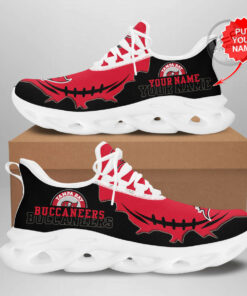
Tampa Bay Buccaneers sneaker – NFL shoes
$85.95 – $87.95
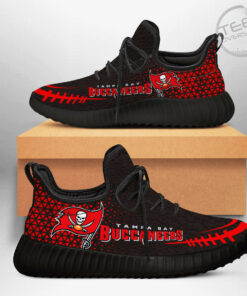
Tampa Bay Buccaneers Custom Sneakers – NFL shoes
$85.95 – $85.98
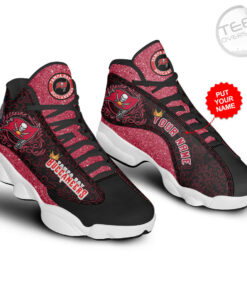
Tampa Bay Buccaneers shoes – NFL sneakers
$89.95 – $89.98
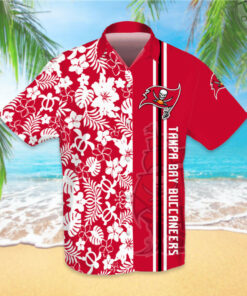
Tampa Bay Buccaneers Hawaiian Shirt, Hawaiian Short 3D – NFL Clothes
$42.95 – $43.95
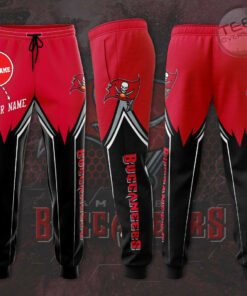
Best Sellers Tampa Bay Buccaneers Sweatpant 3D – NFL Clothes
$45.95 – $45.98

Tampa Bay Buccaneers Short Sleeve Dress Shirt 3D – NFL Clothes
$35.95 – $35.98
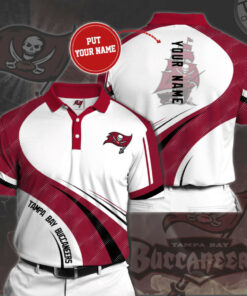
Tampa Bay Buccaneers Polo 3D – NFL Clothes
$41.95 – $41.98
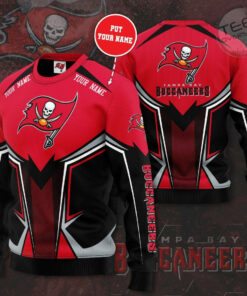
Tampa Bay Buccaneers Sweatshirt 3D – NFL Clothes
$41.95 – $41.98
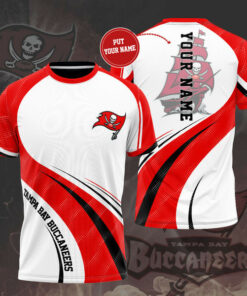
Tampa Bay Buccaneers T-shirt 3D – NFL Clothes
$29.95 – $29.98
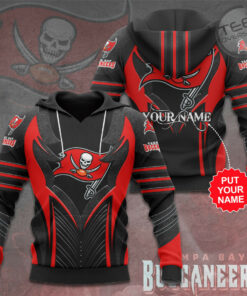
Best Sellers Tampa Bay Buccaneers Hoodie 3D – NFL Clothes
$45.95 – $45.98
The Buccaneers have won two Super Bowl championships and, along with the Baltimore Ravens, are the only two NFL franchises who are undefeated in multiple Super Bowl appearances. They were regarded as a perennial losing franchise for most of their first two decades due to suffering 26 consecutive losses in their first two seasons and 14 consecutive losing seasons from 1983 to 1996. Despite these early struggles, Tampa Bay is the first post-merger expansion team to clinch a division title, win a playoff game, and host a conference championship; feats they accomplished by their fourth season in 1979. The team's image improved by the time of their first championship in 2002, also the first for a franchise built after the merger, but they would not win another playoff game until their second Super Bowl championship season in 2020. Concurrent to the lack of success outside of their Super Bowl wins, the Buccaneers hold the NFL's lowest winning percentage at.404.
Franchise history
Hugh Culverhouse era
John McKay years
The Buccaneers joined the NFL as members of the AFC West in 1976. The following year, they were moved to the NFC Central, while the other 1976 expansion team, the Seattle Seahawks, switched conferences with Tampa Bay and joined the AFC West. This realignment was dictated by the league as part of the 1976 expansion plan, so that both teams could play each other twice and every other NFL franchise once during their first two seasons. Instead of a traditional schedule of playing each division opponent twice, the Buccaneers played every conference team once, plus the Seahawks.
Tampa Bay did not win their first game until the 13th week of their second season, starting with a record of 0–26. Until the Detroit Lions in 2008, the 1976 Bucs were the only Super Bowl-era team to go winless in a whole season. Their losing streak caused them to become the butt of late-night television comedians' jokes. Their first win came in December 1977, on the road against the New Orleans Saints. The Saints' head coach, Hank Stram, was fired after losing to the Buccaneers. Tampa Bay needed one more week to get their second victory, a home win over the St. Louis Cardinals in the 1977 season finale. The Cardinals also fired their coach, Don Coryell, shortly afterward.
The Bucs' situation improved rapidly in the 1979 season. With the maturation of quarterback Doug Williams and future four-time Pro Bowl tight end Jimmie Giles, the first 1,000-yard rushing season from running back Ricky Bell, and a smothering, league-leading defense led by future NFL Hall of Famer Lee Roy Selmon, the Bucs kicked off the season with five consecutive victories, a performance that landed them on the cover of Sports Illustrated.
With four games left in the season, the Bucs needed to win only one of them to make the playoffs. In the first, STP was put all over the goal posts in Tampa to prevent the goalposts from being ripped down in the event of a celebration. Four blocked kicks later, the Bucs wasted the oily substance, falling to the Minnesota Vikings 23–22. STP was wasted again the following week as the Bucs were shut out 14–0 by the Chicago Bears; and in O. J. Simpson's final home game in San Francisco, Tampa Bay lost its third straight attempt to clinch a division title against a 49ers team which came in with a 1–13 record. However, in the season finale at home against the Kansas City Chiefs, which was played in the worst downpour in Bucs history, Tampa Bay pulled out a 3–0 victory. Finishing with a 10–6 record, the Bucs had their first winning season in franchise history, and won the Central Division in a tiebreaker over the Bears. In an upset, the Bucs defeated the Philadelphia Eagles 24–17 in the divisional round of the playoffs. Because the Los Angeles Rams defeated the Dallas Cowboys in the other NFC playoff game, the Bucs hosted the NFC Championship Game the following week in Tampa. The Bucs lost to the Rams 9–0. In their fourth season, the Bucs seemed on the verge of fulfilling McKay's five-year plan.
The Bucs made the playoffs again by winning their division in the 1981 season. It came down to a thrilling final game at Detroit; the winner would take the Central Division crown and the loser would miss the playoffs. The Detroit Lions had not lost at home all season. Although the Bucs trailed early, an 84-yard touchdown bomb from QB Williams to WR Kevin House and a fumble recovery for a touchdown by DT David Logan sealed the win for the Bucs. In the playoffs, the Cowboys defeated the Bucs, 38–0, in the divisional round.
The 1982 season started 0–3 for the Bucs, before a player's strike shut down the NFL for seven weeks. When the league resumed play, the Bucs were nicknamed the "Cardiac Kids" for winning five of their next six games, all in the final moments, to go 5–4 and qualify for the expanded playoff slate. In the first round, the Bucs once again faced the Cowboys at Dallas, losing 30–17. As it turned out, this would be the last winning regular season under Culverhouse's ownership.
Before the 1983 season, Williams bolted to the United States Football League in a salary dispute. The Bucs lost their first nine games of the 1983 season en route to finishing 2–14, the first of 12 consecutive seasons with at least ten losses—an NFL record. Included was the drafting of Heisman Trophy winner Bo Jackson with the first pick in the 1986 draft. Jackson had let it be known that he would never play a down for Hugh Culverhouse at Tampa Bay. Making good on his threat, he opted instead to play baseball for the Kansas City Royals and would later return for parts of football seasons with the Los Angeles Raiders. Along with Williams, who later was a Super Bowl champion QB for Washington, two other Buc quarterbacks during this era led other teams to Super Bowl wins. Steve Young won with the 49ers and Trent Dilfer won with the Baltimore Ravens.
Under Culverhouse, the Bucs were one of the NFL's more profitable teams during the 1980s; however, this was largely because he kept the payroll among the lowest in the league, hampering their ability to sign quality players. Attendance also sagged; at one point the Buccaneers went parts of three whole seasons without having a home game televised locally, and when they did it was more attributed to a strong visiting team with a large following in the area, such as the Chicago Bears or Green Bay Packers.
Hardy Nickerson, a future five-time Pro Bowl linebacker, signed as a free agent from the Pittsburgh Steelers. John Lynch, a future Pro Bowl strong safety, was drafted in 1993. In the 1995 NFL draft the Buccaneers drafted two future Hall of Famers: Warren Sapp and Derrick Brooks. Pro Bowl Fullback, Mike Alstott, was drafted the next year in the 1996 draft.
Glazer family era
Despite the profitability of the Buccaneers in the 1980s, Culverhouse's death in 1994 revealed a man close to bankruptcy despite having a low payroll for his team. His son, Miami attorney Hugh Culverhouse Jr soon sued his father's associates who had built the trust account that was meant to manage the elder Culverhouse's business after having his wife sign a post-nuptial agreement. At any rate, a settlement was soon reached that gave control of the trust to Culverhouse Jr, who sold the team for $192 million. Interested parties included New York Yankees owner George Steinbrenner and Baltimore Orioles owner Peter Angelos, the latter of whom publicly declared he would move the team to Baltimore, as the city did not have an NFL franchise at that time.
However, in a last-minute surprise, real estate magnate Malcolm Glazer outbid both of them for $192 million, the highest sale price for a professional sports franchise up to that point. Glazer immediately placed his sons Bryan, Edward, and Joel in charge of the team's financial affairs. He stated that he had every intention of keeping the team in Tampa, but informed area citizens its current stadium deal would not support the record paid amount and that a new stadium would be required. The Glazers convinced Hillsborough County voters to raise sales taxes to fund the construction of what would become Raymond James Stadium.
Tony Dungy years
The Glazers' deep pockets and serious commitment to fielding a winning team–in Tampa Bay–finally allowed the Bucs to become competitive. The team's performance dramatically improved when the Glazers hired Minnesota Vikings defensive coordinator Tony Dungy as head coach. Additionally, the team jettisoned the old uniform designs in favor of a modern look.
During Dungy's first season in 1996, the team continued to struggle, starting the season 1–8. But in the second half of the season, they finished 5–2, primarily due to the performance of a defense ranked seventh in the NFL led by Hardy Nickerson and the maturing of Sam Wyche's draftees Brooks, Lynch, and Sapp. Dungy, with his even-tempered personality, quickly brought balance and morale to the team, and his Cover 2 defensive scheme, sharpened to perfection by defensive coordinator Monte Kiffin and linebackers coach Lovie Smith, became the foundation for Tampa Bay's future success. Their version of Cover 2 was so successful that it became known as the Tampa 2. It has been brought to the Ch…
Eye-catching new design Tampa Bay Buccaneers clothing will be the perfect gift for Tampa Bay Buccaneers fans. Clothing on printed with unique and fancy designs, limited number of products.

Tampa Bay Buccaneers sneaker – NFL shoes
$85.95 – $87.95

Tampa Bay Buccaneers Custom Sneakers – NFL shoes
$85.95 – $85.98

Tampa Bay Buccaneers shoes – NFL sneakers
$89.95 – $89.98

Tampa Bay Buccaneers Hawaiian Shirt, Hawaiian Short 3D – NFL Clothes
$42.95 – $43.95

Best Sellers Tampa Bay Buccaneers Sweatpant 3D – NFL Clothes
$45.95 – $45.98

Tampa Bay Buccaneers Short Sleeve Dress Shirt 3D – NFL Clothes
$35.95 – $35.98

Tampa Bay Buccaneers Polo 3D – NFL Clothes
$41.95 – $41.98

Tampa Bay Buccaneers Sweatshirt 3D – NFL Clothes
$41.95 – $41.98

Tampa Bay Buccaneers T-shirt 3D – NFL Clothes
$29.95 – $29.98

Best Sellers Tampa Bay Buccaneers Hoodie 3D – NFL Clothes
$45.95 – $45.98
Comments
Post a Comment